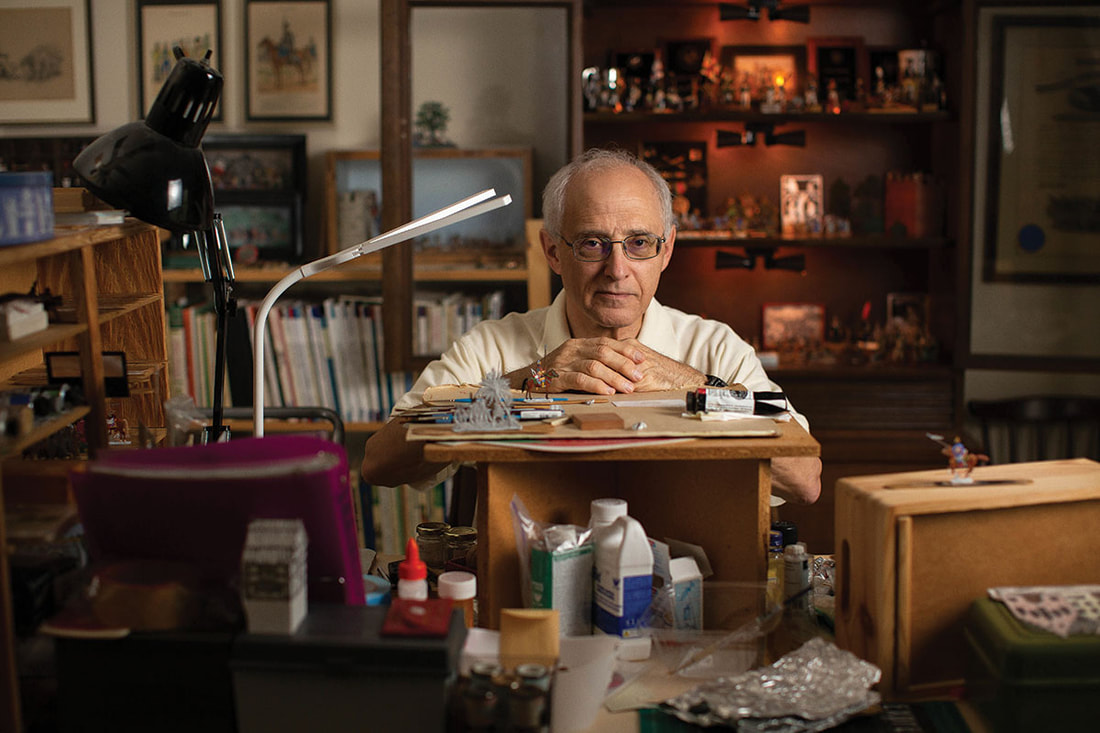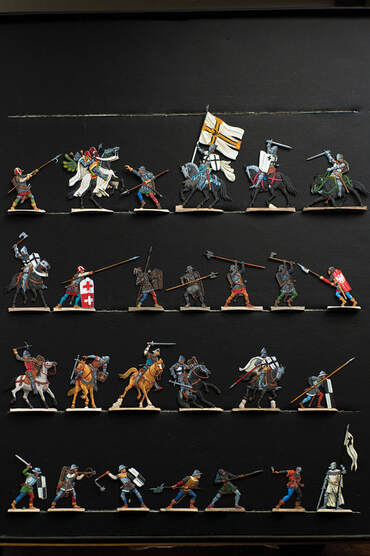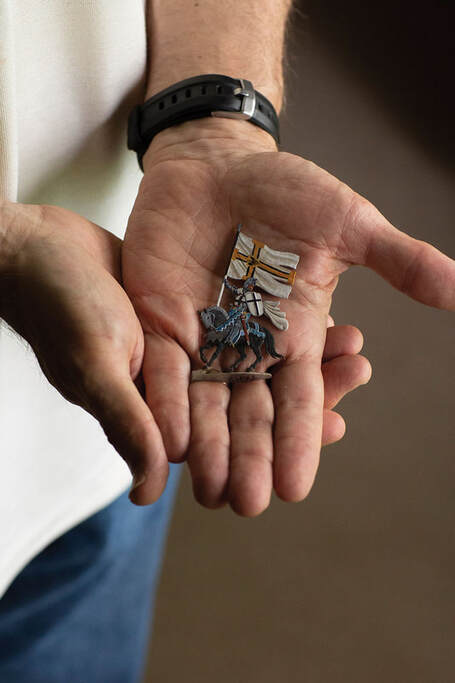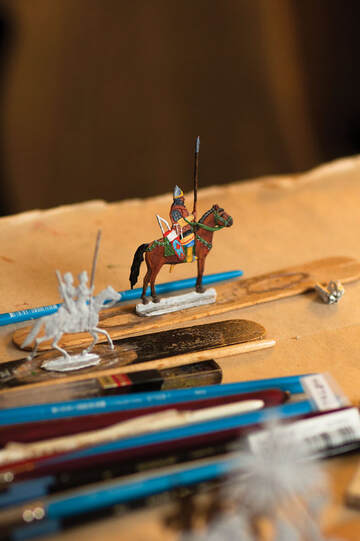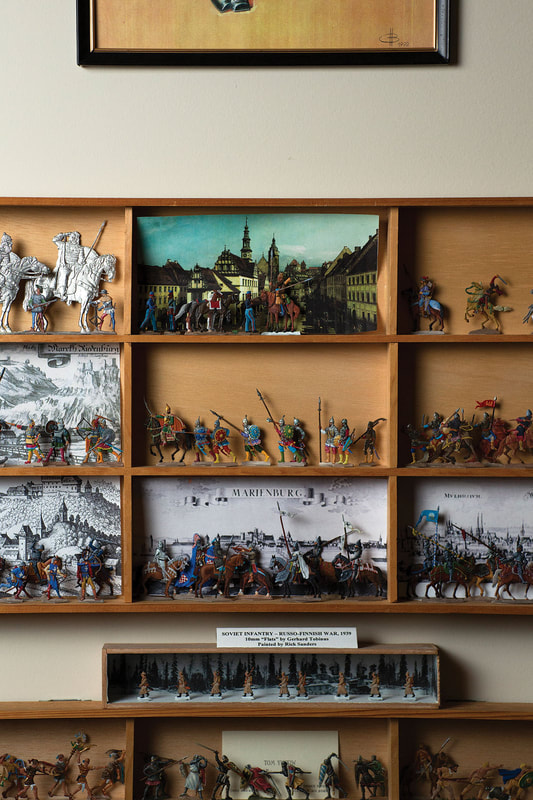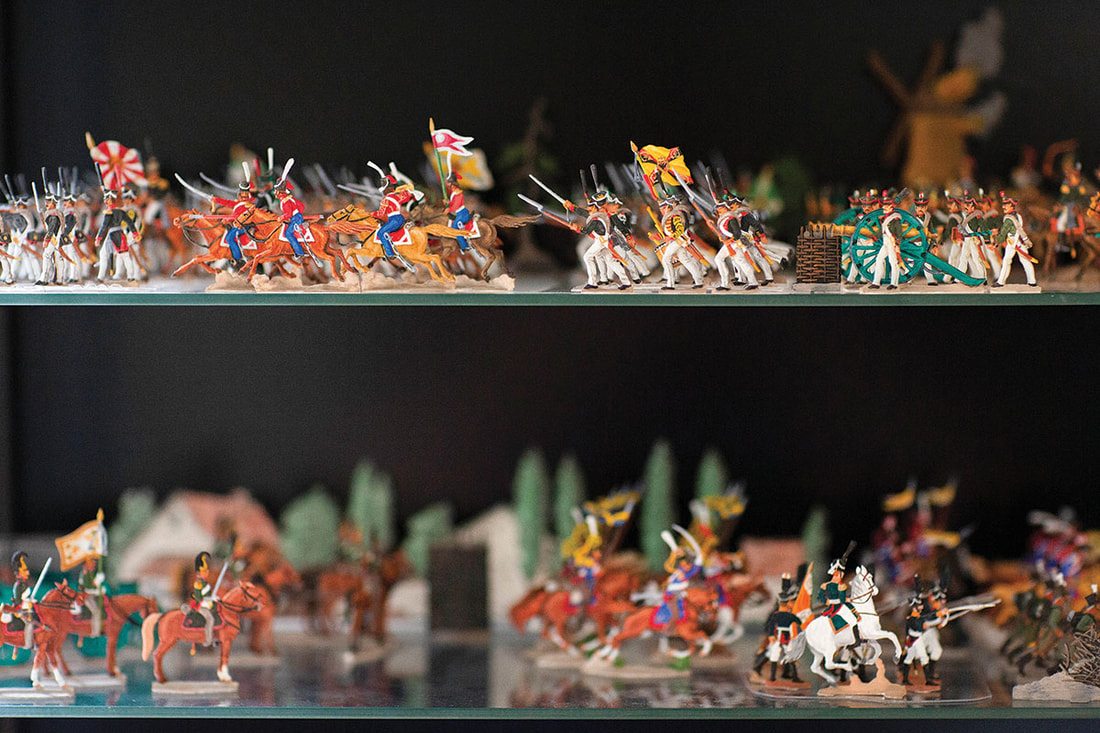- Home
- Intro - Einführung
- Newly Added
- Antiquity
- Middle Ages
- Renaissance to 1700
- 18th Century - 18. Jhdt.
-
Napoleonic Wars
- 1816-1914
- World War I 1914-1918
- 1918 to Present
- Heinrichsen Group Figures
- Misc. Figures
- Other Painters
- Kulmbach Fairs - Börsen
- Magazine Profile on Rick
- Rick's Publications
- Contact / Kontakt
Carolina Home & Garden, July 23, 2021
Miniature Brushes For Maximum Benefit
by Jason Gilmer
Retired military man spends countless hours painting vintage soldiers
Miniature Brushes For Maximum Benefit
by Jason Gilmer
Retired military man spends countless hours painting vintage soldiers
Photo by Colby Rabon from Carolina Home & Garden Magazine, Summer 2021
|
ARMY OF ONE
Richard Sanders applies himself to a unique hobby. Photo by Colby Rabon Rick Sanders’ fascination with flat tin figurines (aka “flats”) dates back more than 50 years ago, to his days as a teenager when he played table war games, classic style, with a group of friends in the Washington, DC, suburbs. One of those friends decided to build a Napoleonic Russian army and needed some assistance. “The Napoleonic Russian army was not well trained, but they compensated for it by having huge numbers of troops,” Sanders explains. “So the problem was, [my friend] needed somebody to help him — he couldn’t afford to buy all the figures that he needed. I started off doing a Napoleonic Russian army with him.” This meant obtaining and painting several hundred of the small figures. (Sold in Germany as common toys since the early 1800s, they were, by then, already becoming valuable. Today they are coveted collectibles.) So Sanders used some of his gaming partner’s figures to make his own plaster molds, but ordered as many from Germany as a teenager’s budget would allow. |
Photo by Colby Rabon
|
|
Photo by Colby Rabon
|
Like their name suggests, flat figurines or “flats” — seen here up close and en masse — can only be two millimeters thick. “My collection grew and grew and grew over the years. I stopped playing war games, but I was kind of hooked on flat figures because I had seen a picture in a book — I could not believe that the figure was actually a flat figure because it was so [realistically] painted.” Sanders adds that he had always been interested in military history. He started taking German in high school, and then his father, a career Army officer, was transferred to Germany: “I was situated in just the right place to learn German and collect the figures.” Called Zinnfiguren in their country of origin, flat figures are mostly 30 millimeters tall and typically cast from hand-engraved slate molds. They stand up freely, but unlike three-dimensional figurines, they are only two millimeters thick; hence “flat.” Sanders’ collection includes many figures whose slate molds were cast more than 100 years ago (those molds have been refurbished and can again produce figures). He has painted between 4,000 and 5,000 flat figures over the decades but still has 3,000 unpainted flats in his collection that he hopes to paint in his retirement. Some he has sold, but most are still displayed in his home: in shadow boxes, posed against backgrounds he has drawn or painted, or in glass-fronted cabinets. |
During Sanders’ career — he is a retired Army colonel and former Department of Defense employee — he worked for almost 20 years in Germany, where flat figures are most accessible. Finding them in the U.S. has been tough, he admits. He knows of only about 30 other collectors in the country, and eBay has become the spot to find possible additions to his collection, and through established contacts in Europe. (He’s occasionally sold his own flat figures on eBay, but if he paints them, he photographs them so he can remember his work.)
|
Photo by Colby Rabon
|
|
Sanders paints and poses his “flats” for full effect.
Photo by Colby Rabon |
Sanders also has a website where his collection is showcased, including pages for different eras, from ancient to modern times. He recently published a book in German about the flats produced by Hans Müller of Erfurt from 1927 to 1957.
“For many collectors, Müller’s castings are considered to be the most beautiful figures for this period, [since he] employed top-notch artists and engravers,” Sanders writes on his website. Groups such as the International Flat Figure Society are proof that the hobby still thrives; an article shared on their site in August 2020 — The Flat Figure — Toy to Objet D’art, by Walter Fischer — received thousands of views. Sanders uses oils and miniature “000” brushes to paint his figures. It’s an artistic household: His wife, Ellen, a retired art teacher and book and mixed-media artist, shows her work in Asheville’s River Arts District. And while building an army of vibrant, authentic flat figures is undeniably satisfying — he loves “adding color and life to a colorless figure” — it’s not even the best part of the experience, says Sanders. “I think I get the greatest joy from doing the research … and [accomplishing the] historical accuracy.” |
Photo by Colby Rabon
To aspiring hobbyists in the genre, he advises, “Find a theme you like: antiquity, knights, the Bible, the American Civil War, fantasy, whatever, but be open to other subjects [too].
“Pick your figures carefully and do careful research for your painting — or use your imagination.”
Additional reporting by Melanie McGee Bianchi.
For more information, see ricksanderszf.com.
Proudly powered by Weebly
